Gijang Market is one of the must-visit destinations when traveling to Busan. I visited this lively spot with my parents over the weekend, and it was filled with vibrant energy and fresh seafood. In this post, I’ll share how to get to Gijang Market and my impressions of this remarkable place.
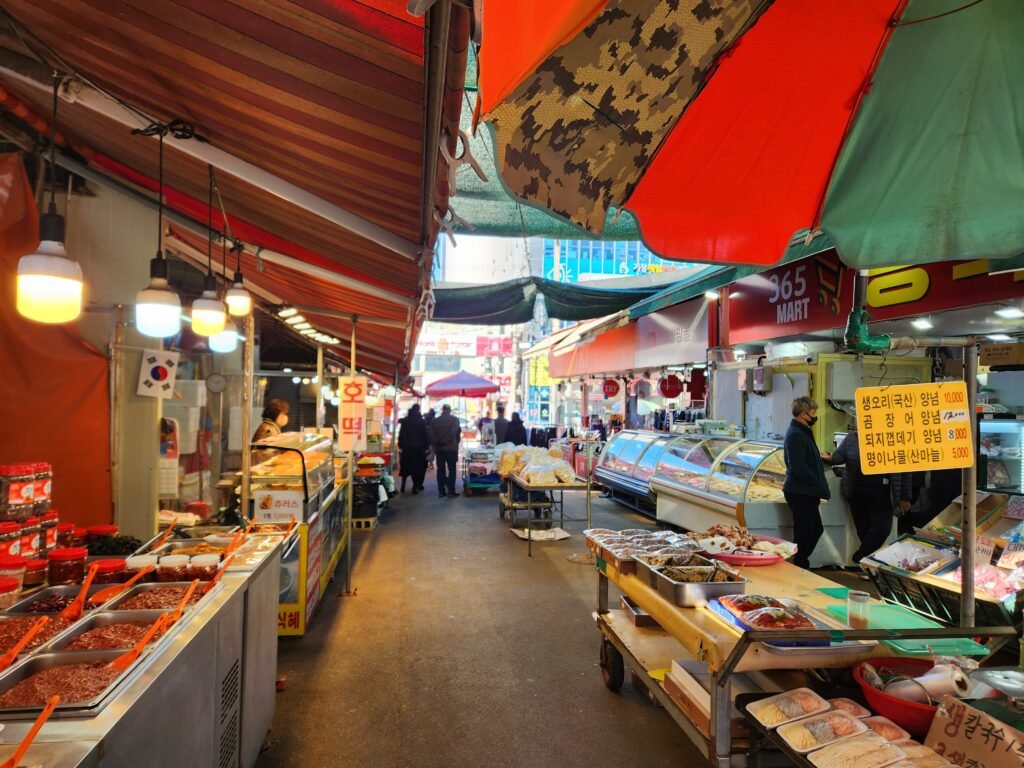
How to Get to Gijang Market
There are two main ways to get to Gijang Market. The first is by subway. Take the Donghae Line and get off at Gijang Station. Exit through Exit 1, and it takes about 5 minutes to walk towards Gijang Market—very convenient!
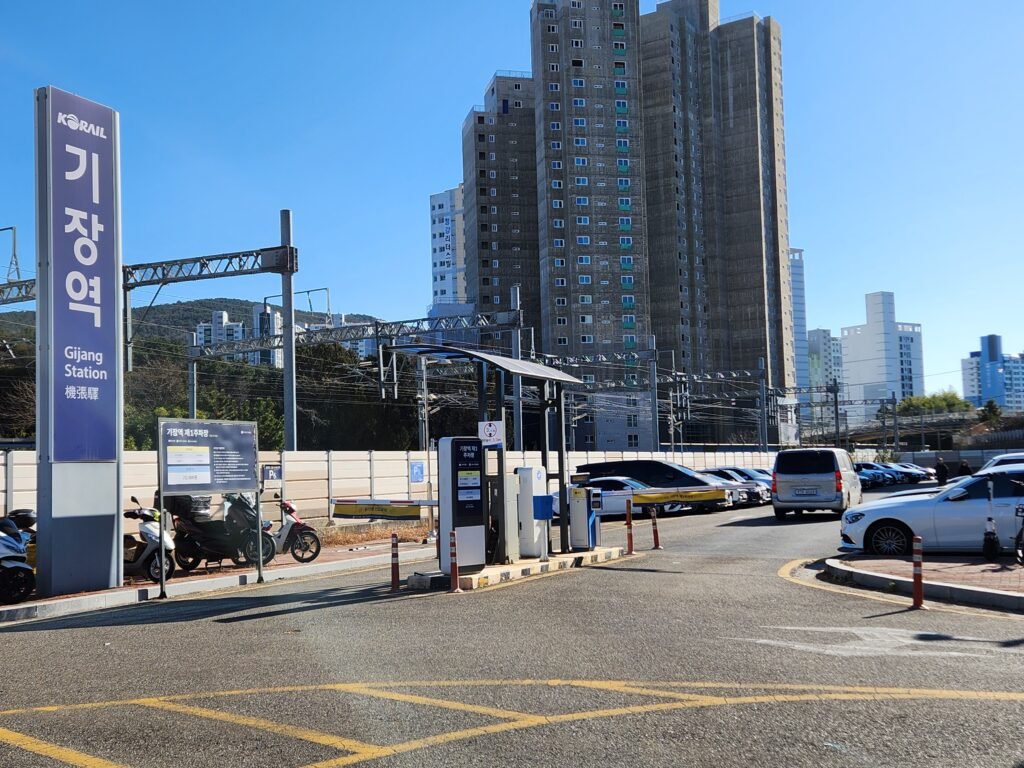
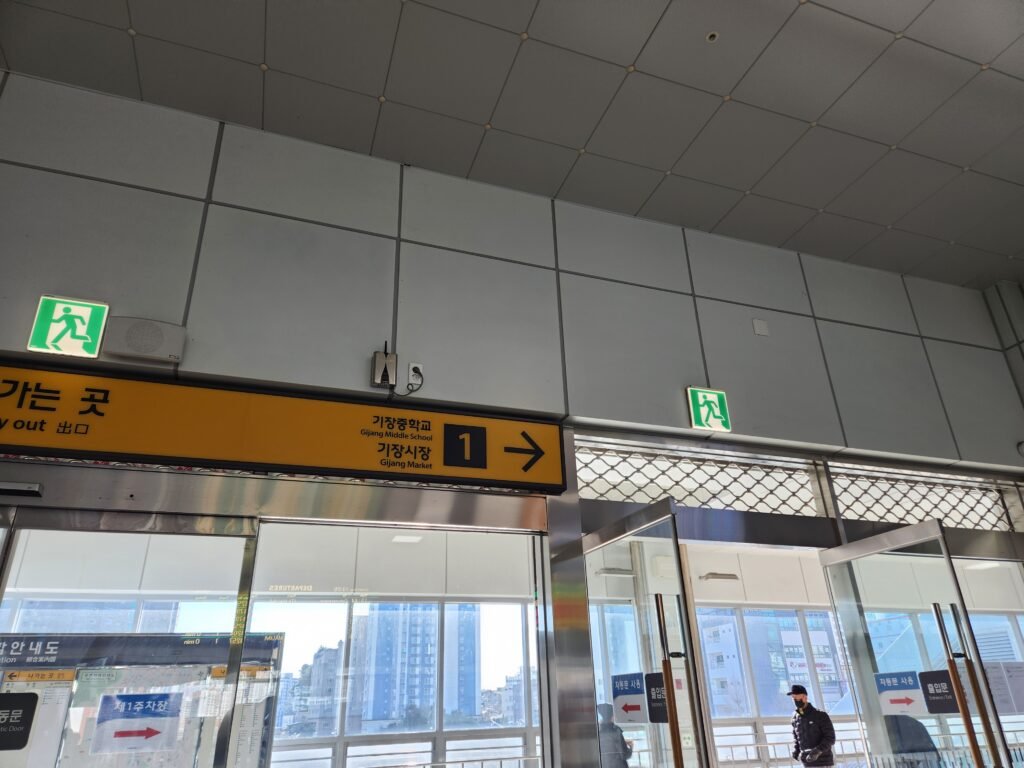
The second option is by car. Near Gijang Station, there is a public parking lot dedicated to market visitors. The lot is spacious enough to accommodate crowds, even on weekends. Parking fees are affordable, costing just 200 KRW($0.14) per 10 minutes or up to a maximum of 8,000 KRW($5.45) per day.
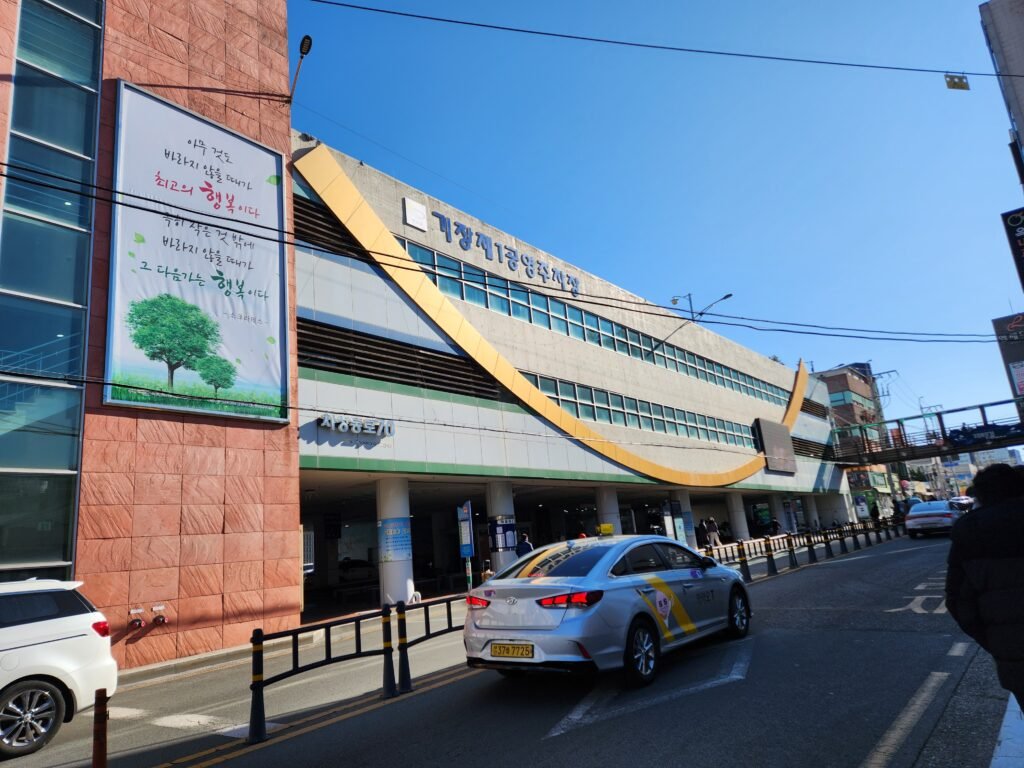
The Atmosphere of Gijang Market
When I visited Gijang Market on a weekend, it was bustling with people. The market mainly focuses on seafood, offering an incredible variety of fresh fish and shellfish that are hard to resist. Crab stalls were particularly abundant, and many restaurants offered to steam the crabs on-site, making them a popular choice for families.
Beyond seafood, the market’s lively atmosphere and diverse selection of foods made it an enjoyable experience for everyone. You can truly feel the charm of a traditional Korean marketplace here.
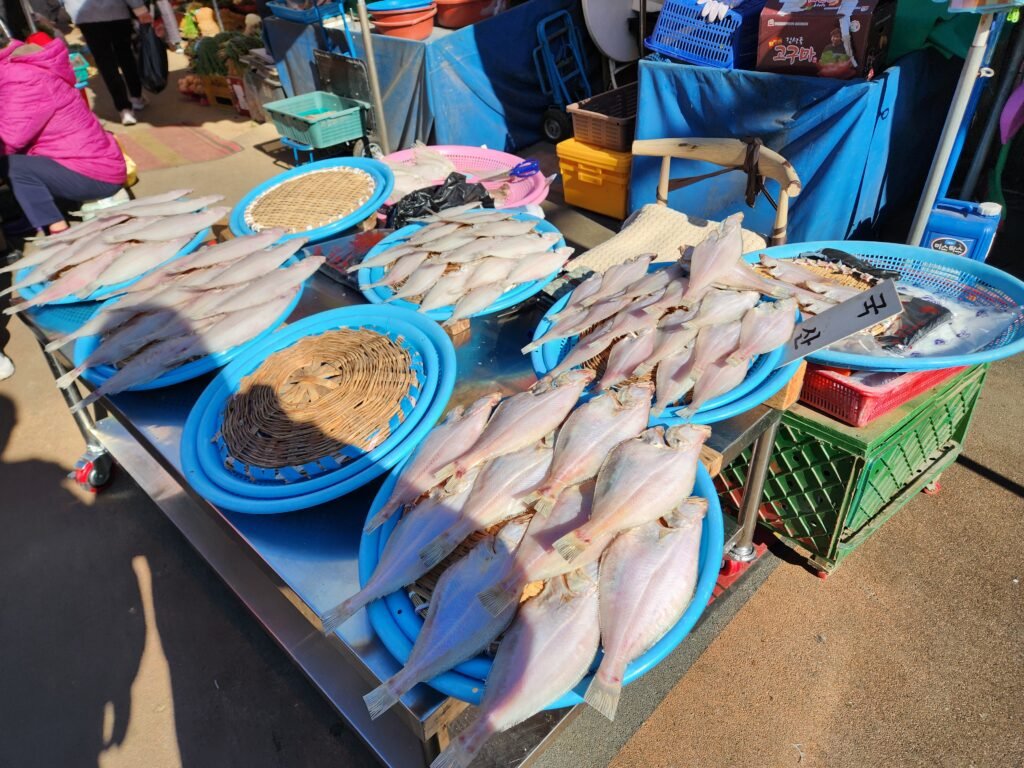
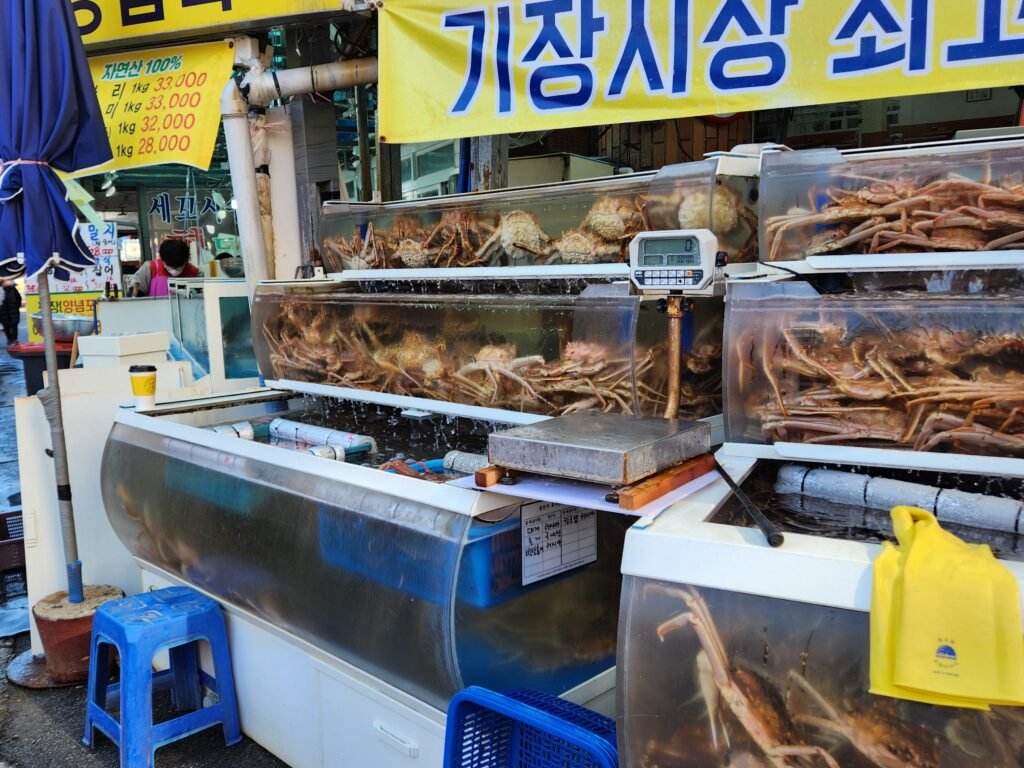
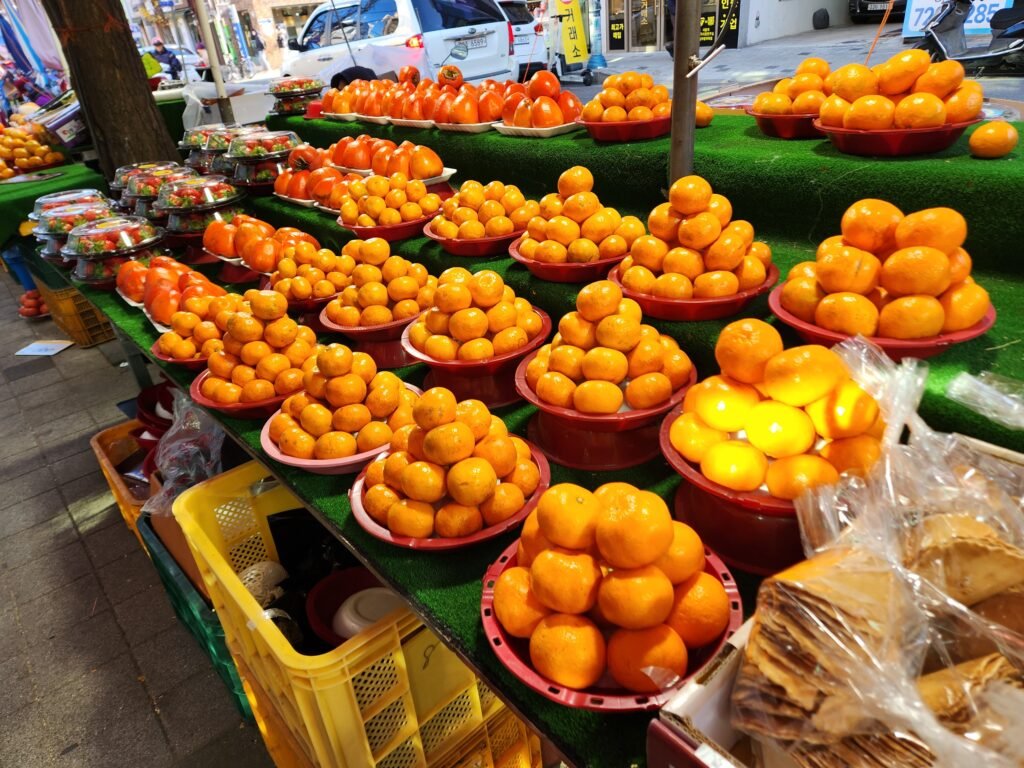
Winter’s Special Treat: Oysters
Since my visit was in January, oysters were in season and widely available. In the United States, oysters are often expensive, but in Korea, you can purchase fresh oysters at much more reasonable prices. A basket of oysters costs around 10,000 to 20,000 KRW($7~14), offering both quantity and quality. Whether steamed or raw, oysters make for a perfect winter delicacy. Seeing the piles of oysters at the market was a sight you wouldn’t typically encounter in the U.S.
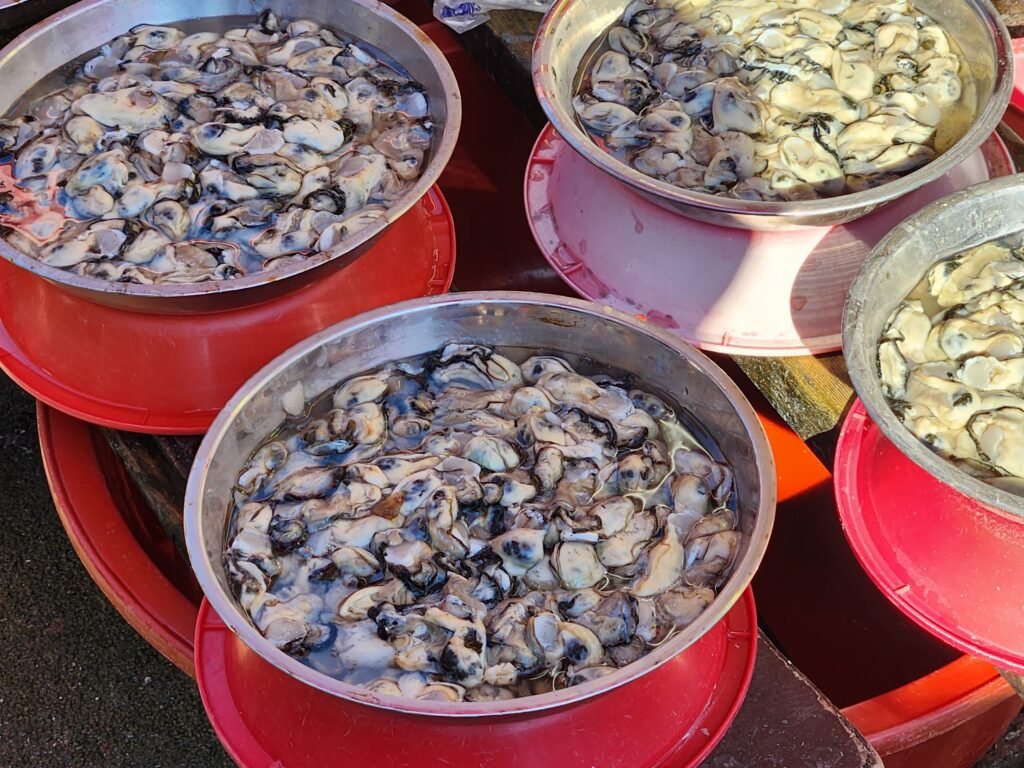
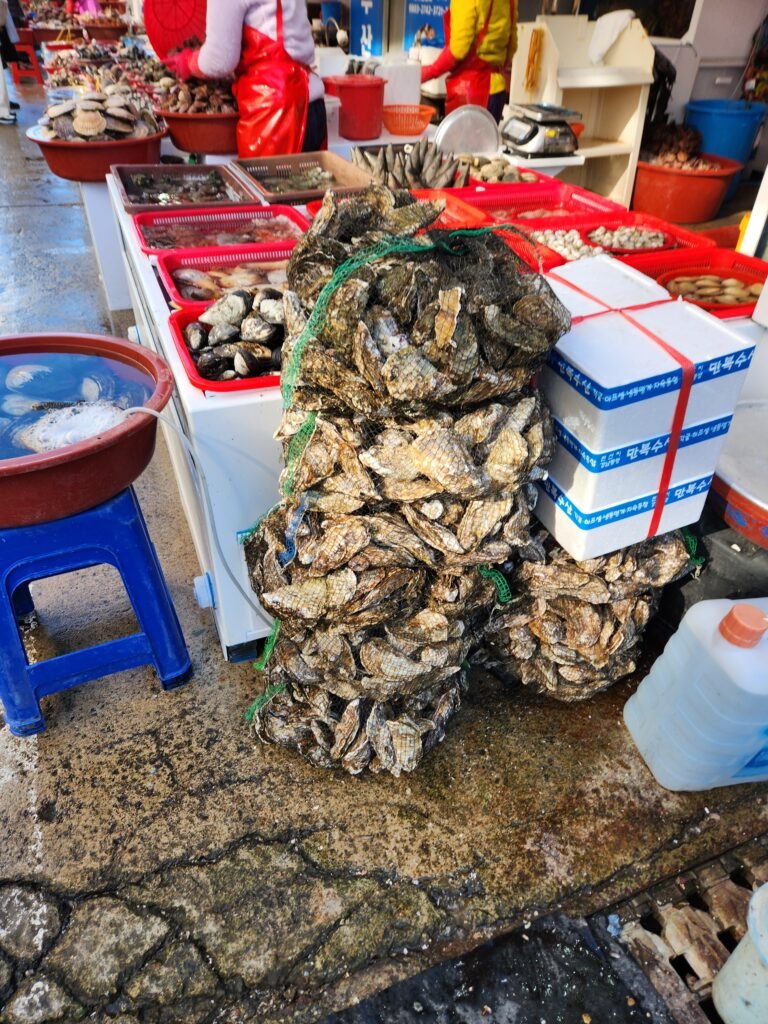
My Picks: Jokbal and Jeon
While exploring the market, I bought jokbal (braised pig’s trotters) and jeon (savory pancakes). The jokbal at Gijang Market was different from franchised versions—it was sliced thinner, making it much easier to eat. These thin slices were perfect for sharing with family.
I also tried a variety of jeon, freshly pan-fried and warm. The crisp and savory flavors were absolutely delightful, making it a must-try for visitors.
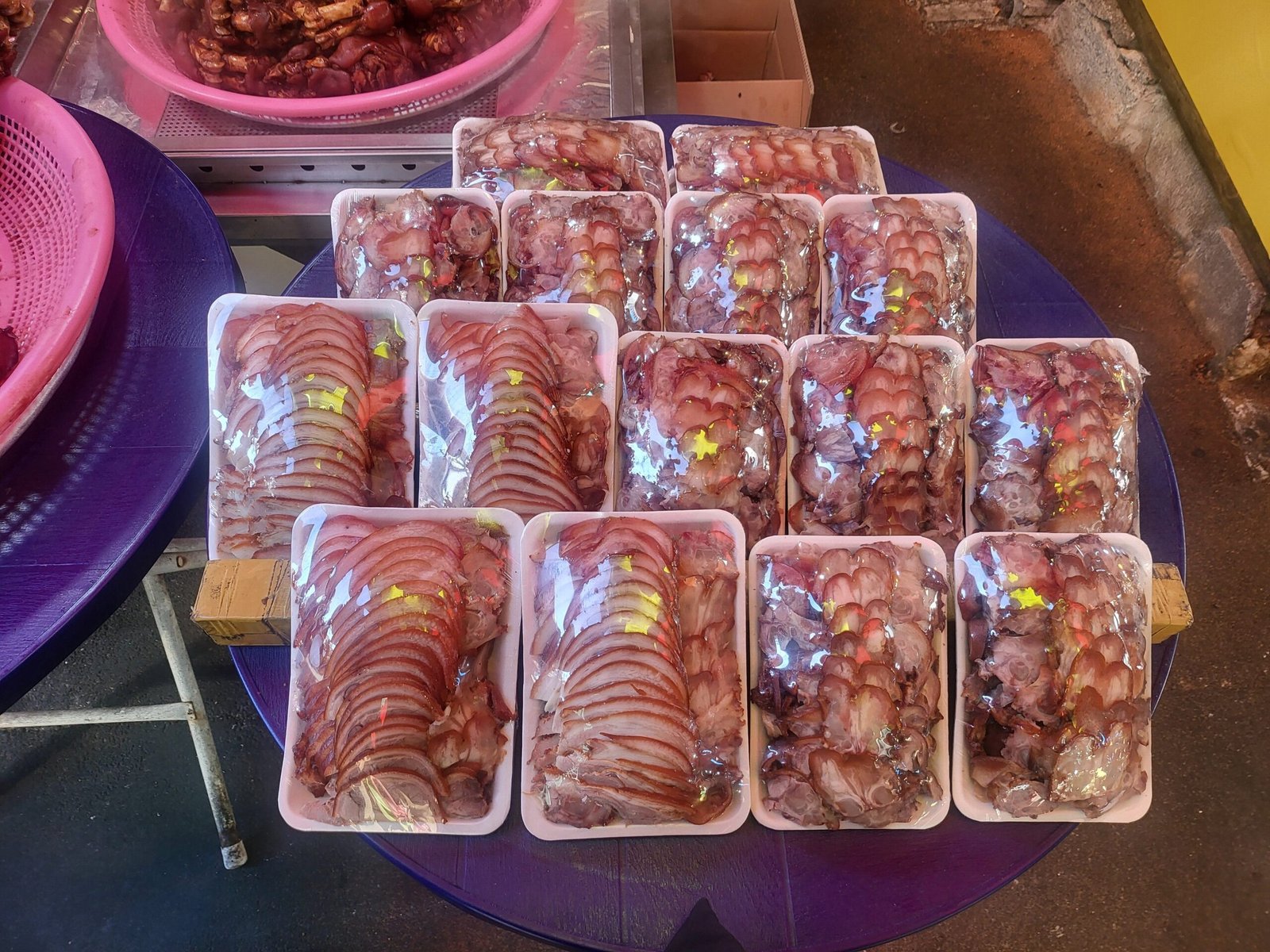
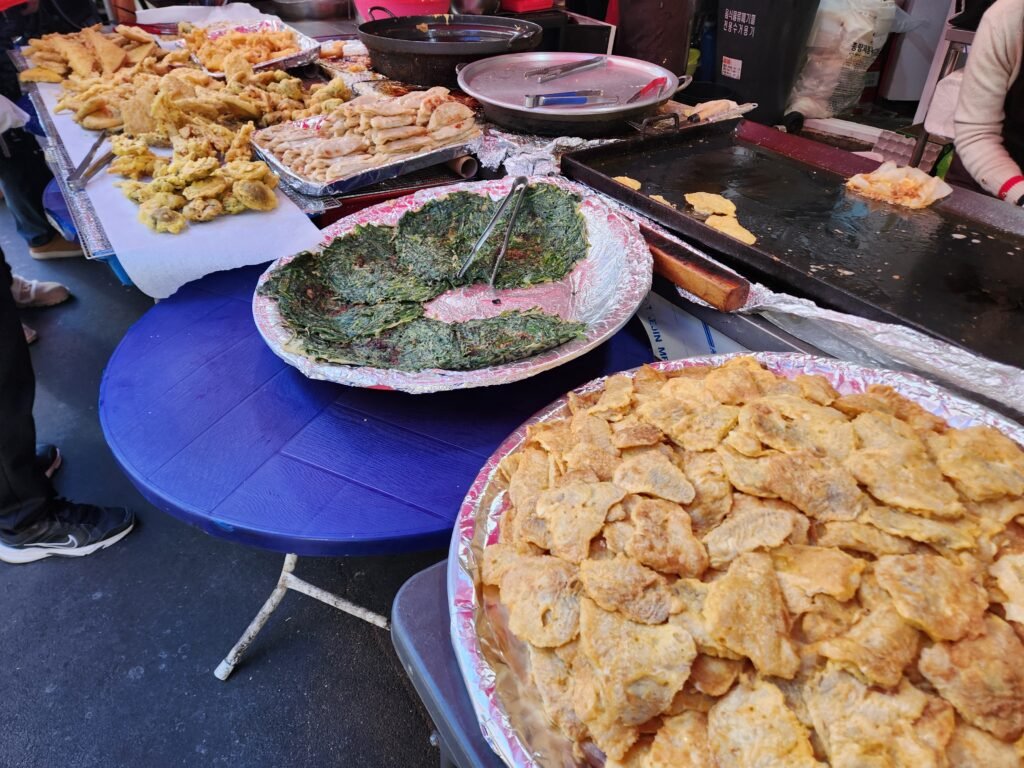
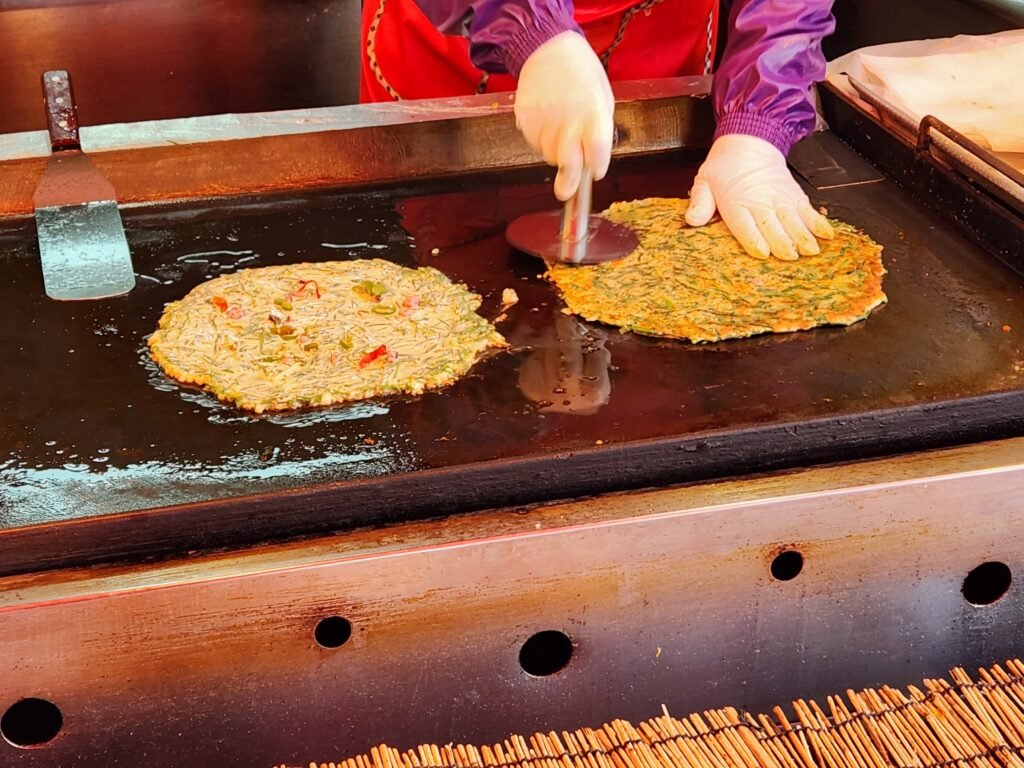
Conclusion
Gijang Market is a treasure trove of fresh seafood and diverse street food, making it a must-visit spot during any trip to Busan. Whether you take the subway or drive, getting there is straightforward. In winter, the seasonal offerings like oysters are particularly worth exploring. Don’t miss out on the warmth and richness of Gijang Market’s food and atmosphere!
